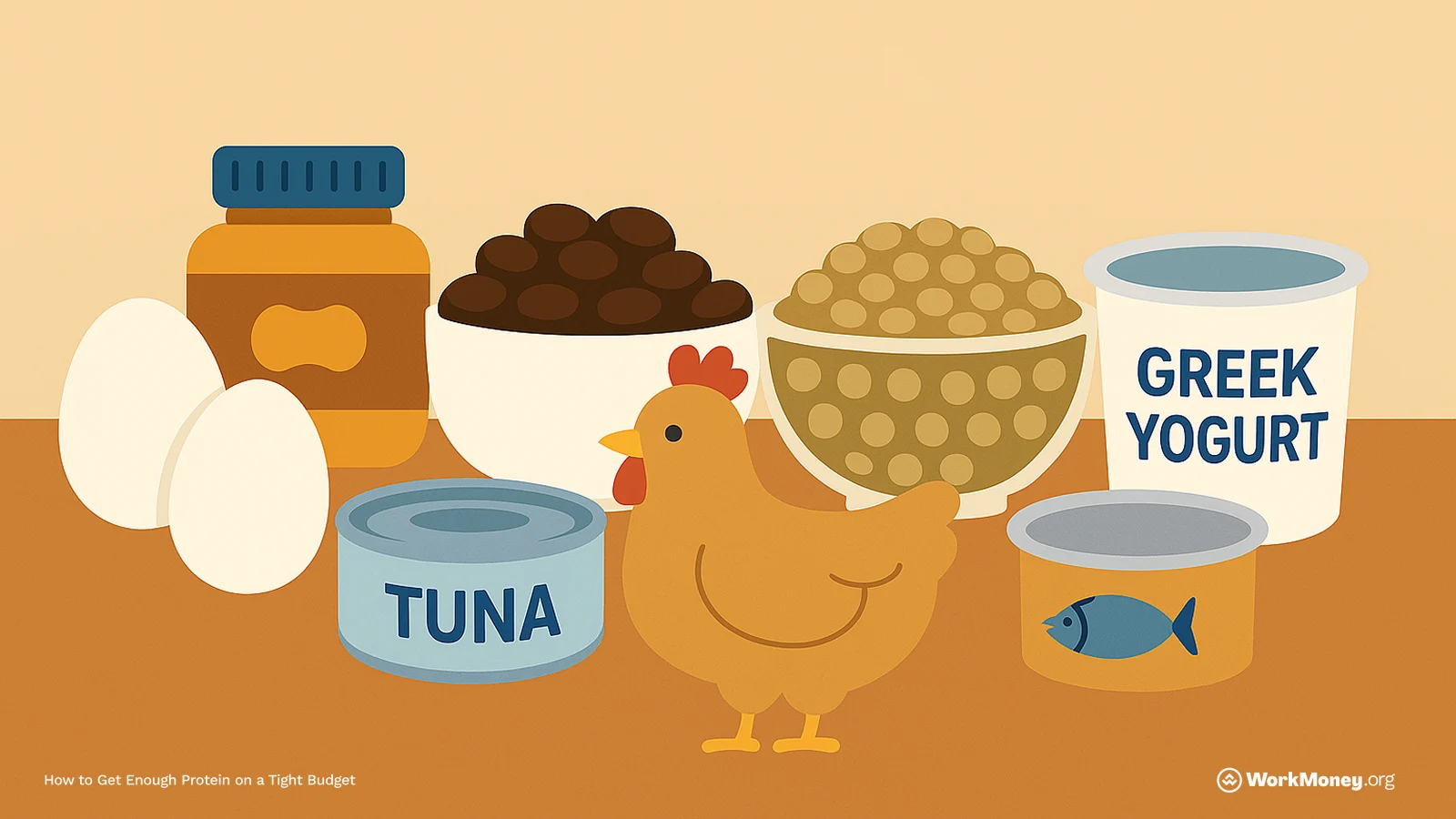How to Get Enough Protein on a Tight Budget
How you can maximize your dollars without giving up your nutritional goals

Protein is an essential nutrient that helps build and repair muscles and keep you feeling full. Additionally, your body has to burn more calories to digest protein, making it a great way to stay lean.
However, with rising food prices, getting enough protein can feel like a challenge, especially if you're on a tight budget. The good news is that there are many affordable and nutritious sources of protein available.
Here’s what you need to know about budget-friendly protein and how you can maximize your dollars without giving up your nutritional goals.

Best Budget-Friendly Protein Sources
Getting enough protein doesn’t have to be expensive. Many nutrient-dense protein sources can be affordable, particularly when purchased in bulk or less processed. Staples like eggs, beans, lentils, and canned fish provide excellent protein per dollar and can be built into a variety of meals. Choosing whole cuts of meat, such as whole chickens or bone-in thighs, also helps maximize value while allowing for multiple meals from a single purchase.
Buying in bulk, taking advantage of store discounts, and opting for generic brands can also help reduce costs. The table below highlights some of the most budget-friendly protein sources, their cost-effectiveness, and storage life to help you make informed choices.
Food Item | |||||
|---|---|---|---|---|---|
Eggs | ~6g per egg | Varies | Varies | 3–5 weeks (refrigerated) | Yes |
Dry Beans | ~15g per cup (cooked) | ~$0.02 | Years (dry); Up to 5 years (canned) | Yes | |
Lentils | ~18g per cup (cooked) | ~$0.02 | Up to 3 years | Yes | |
Peanut Butter | ~8g per 2 tbsp | ~$0.03 | 6–9 months (room temp) | Yes | |
Chicken (Whole/Thighs) | ~26g per 4 oz (cooked) | ~$0.03 | 1–2 days (fridge); Up to 1 year (frozen) | Yes (SNAP) | |
Canned Tuna | ~30g per 5 oz can | ~$0.03 | Up to 5 years (unopened) | Yes | |
Greek Yogurt | ~20g per cup | ~$0.04 | 1–3 weeks (refrigerated) | Yes | |
Cottage Cheese | ~28g per cup | ~$0.06 | 1–2 weeks (refrigerated) | Yes | |
Oats | ~6g per cup (cooked) | ~$0.04 | Up to 2 years | Yes |
Before you run to the store, check to see if you can stack promotions through Instacart to make your grocery haul even cheaper.
How To Get Deals When Buying Protein
One of the best ways to cut costs is to shop at discount grocery stores or buy in bulk from warehouse clubs. Many stores also offer markdowns on meat and dairy products that are nearing their sell-by date—these are safe to eat or freeze for later use. Shopping at local farmers’ markets, especially towards the end of the day, can potentially get you great deals as vendors are often willing to sell at lower prices rather than take products back home.
Another effective way to save is by stacking discounts. Use store coupons, manufacturer rebates, and cashback apps like Upside to further your savings. Some grocery chains have loyalty programs that offer additional discounts on frequently purchased items, including protein-rich foods. Additionally, checking weekly ads and planning meals around sales can help stretch your budget further. By being flexible with your protein sources and shopping strategically, you can keep your grocery costs low without losing protein.
Additionally, try to stay away from protein powders when budgeting. They can be quite expensive and you can get the same amount of nutrients from much cheaper foods like the ones listed above.
Final Thoughts
Eating enough protein on a tight budget is possible with careful planning. Prioritize affordable, high-protein foods like eggs, beans, lentils, peanut butter, and chicken. Take advantage of SNAP and WIC benefits if eligible, and shop smart by buying in bulk, using coupons, and choosing lower-cost protein sources. With these strategies, you can meet your nutritional needs without breaking the bank.

